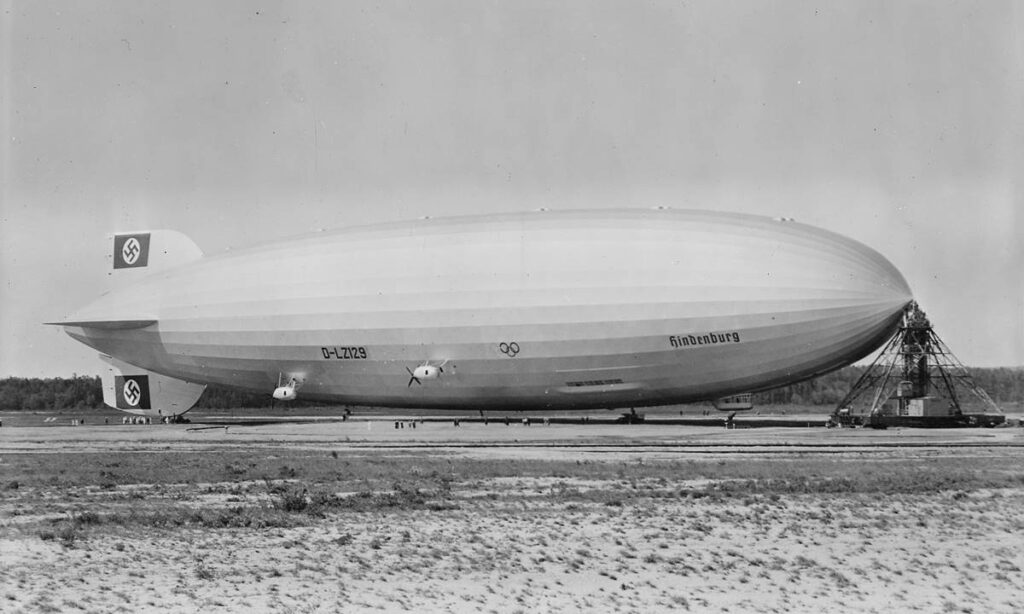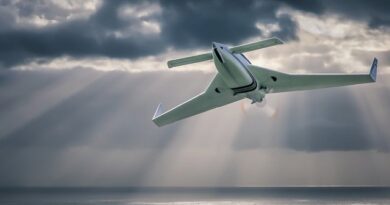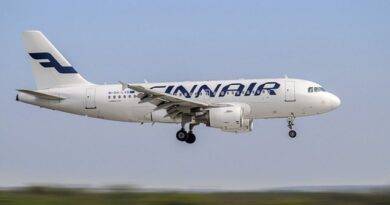Airship – Zeppelin – Hindenburg
An airship is a type of aerostat or lighter-than-air aircraft that can navigate the air under its own power. Aerostats fly by a less dense lifting gas than the surrounding air.
The main types of airships are non-rigid, semi-rigid and rigid structures. Non-rigid airships rely on internal pressure to maintain their shape. Semi-rigid airships maintain their envelope shape with internal pressure, but have some kind of supporting structure, such as a fixed keel attached to it. Rigid airships have an external structural frame that maintains its shape and carries all structural loads with the help of one or more internal gas bags contained in the lifting gas or cell. The rigid airships were first flown by Count Ferdinand von Zeppelin, and the vast majority of the rigid airships built were manufactured by their company Luftschiffbau Zeppelin. As a result, airships are often called “zeppelins”.
Zeppelin is a type of airship and it is the general name of the cigar-shaped guided balloons, which are used as a means of transportation, have engines that enable it to move with thrust and rudders that enable it to steer in the air, and a passenger cabin. German named Count Ferdinand von Zeppelin, the most successful producer of vertebral guided balloons, is the name of guided balloons. Although it was full of hydrogen at first, it was started to be used by filling helium instead of hydrogen after the Hindenburg disaster in 1937.

The Hindenburg disaster took place on May 6, 1937, at Lakehurst naval airbase in New Jersey. The LZ 129 Hindenburg, known as the Hindenburg Zeppelin, which has the distinction of being the largest zeppelin ever built, had its skeleton broken due to the sudden turn of the Hindenburg Zeppelin. One of the hydrogen tanks used to keep the zeppelin in the air was pierced, mixed with oxygen and suddenly caught fire with static sparking. 36 of the passengers inside the zeppelin died within 36 seconds. This disaster later led to the start of modern aviation history.
FIRST FLIGHT
The first succesful steam-powered airship flight was carried out by the French engineer Henri Giffard on 24 November 1852. Giffard carried out this flight by taking off from Paris and flying to Trappes, 30 km away, by attaching the 160 kg and 3 horsepower steam engine under a 43 meter long and 12 meter diameter hydrogen-filled bag.
The first zeppelin was 128 meters long and 11 meters in diameter. Its aluminum frame was covered with a cotton cloth. Inside the skeleton were bubbles of hydrogen-carrying gas. The zeppelin, which was aired on July 2, 1900, flew from a height of 400 meters and traveled 6 kilometers in 17 minutes and 30 seconds. Upon the success of this first zeppelin, new ones were also produced. In particular, the German War Ministry supported the production of the zeppelin.
During World War I, Paris and London were bombed by zeppelins.
After zeppelins transported 52,000 people between the two shores of the Atlantic Ocean, they were discontinued before the 1950s due to the development of new passenger planes and major accidents.
Zeppelins for Advertising
Today, they are produced in a limited number for advertising purposes only in the USA. Although some brands use zeppelins in their advertisements, this is not a common use covering many brands. The most important reason for this is the financial burden of the business. The use of zeppelin for advertising is a serious cost for brands. Factors such as operating expenses, the price of helium gas, and the necessity of a hangar are the main reasons for the high cost.
Did you know these ?
- – Zeppelins were previously filled with hydrogen gas. However, after the Hindenburg disaster in 1937, helium gas was started to be used.
- – The Hindenburg disaster occurred in Lakehurst on 6 May 1937. Completing its first transatlantic passage, the zeppelin caught fire while landing in Lakehurst (New Jersey) and many people died.
- – On the night of May 31, 1915, a German zeppelin was seen in north London and started dropping bombs on the dark streets.
- – Count Ferdinand von Zeppelin was a retired German general.
For more articles.


